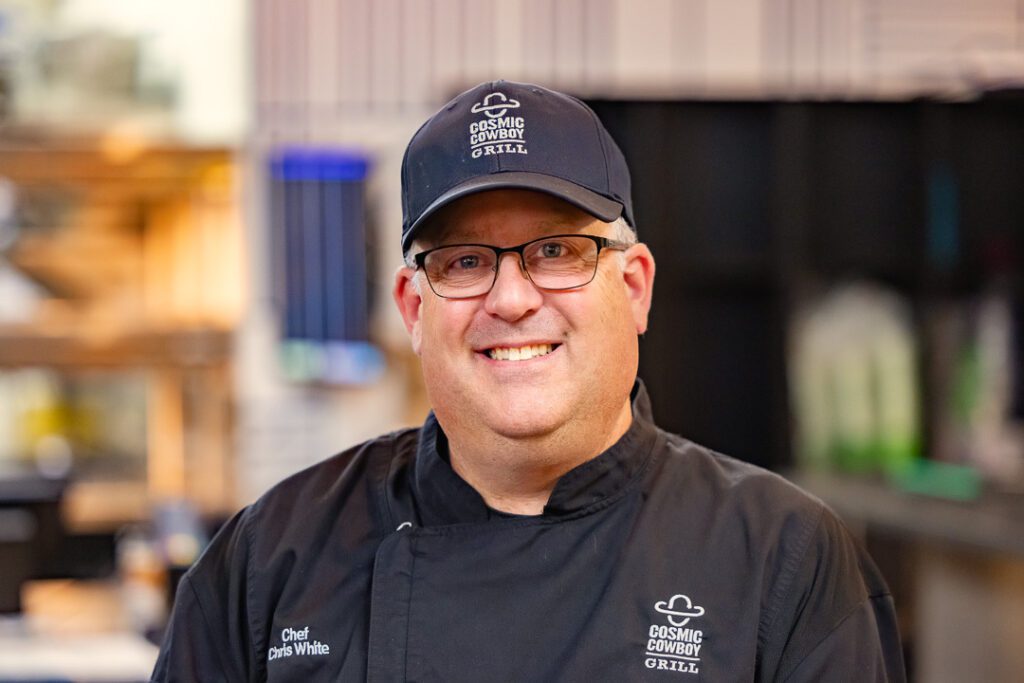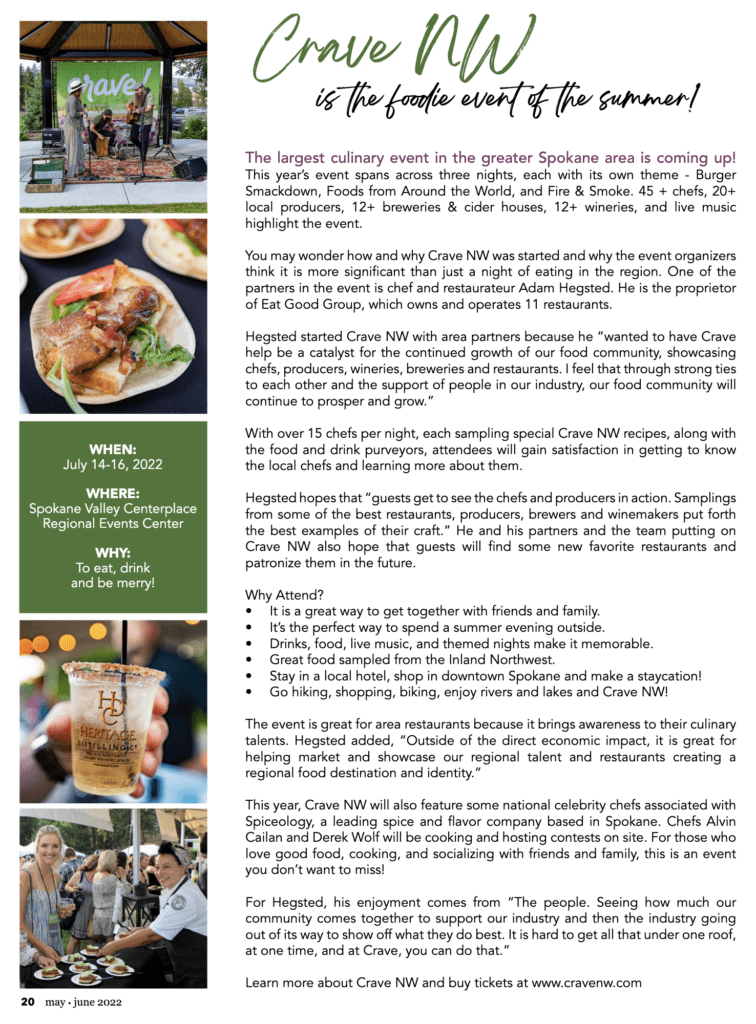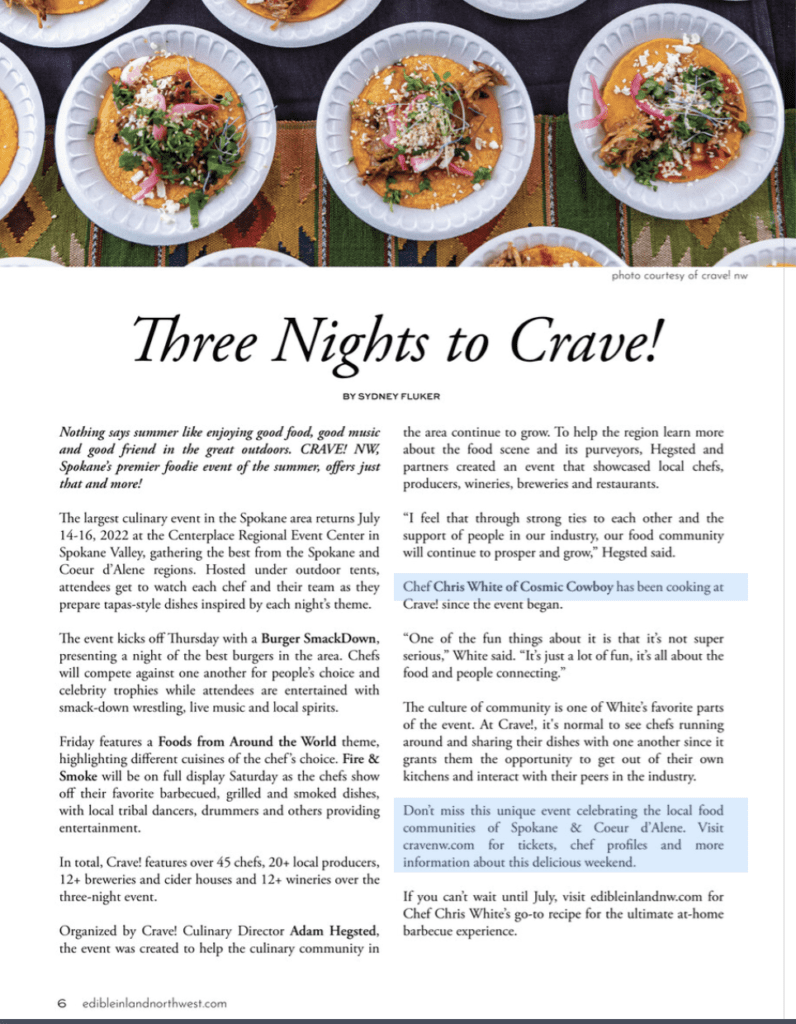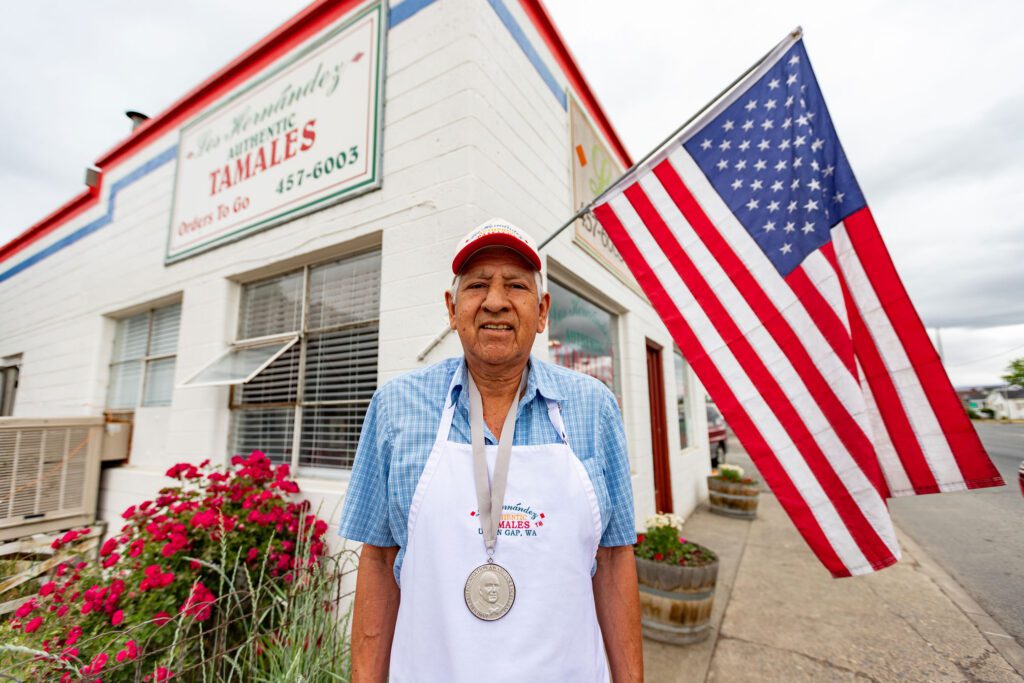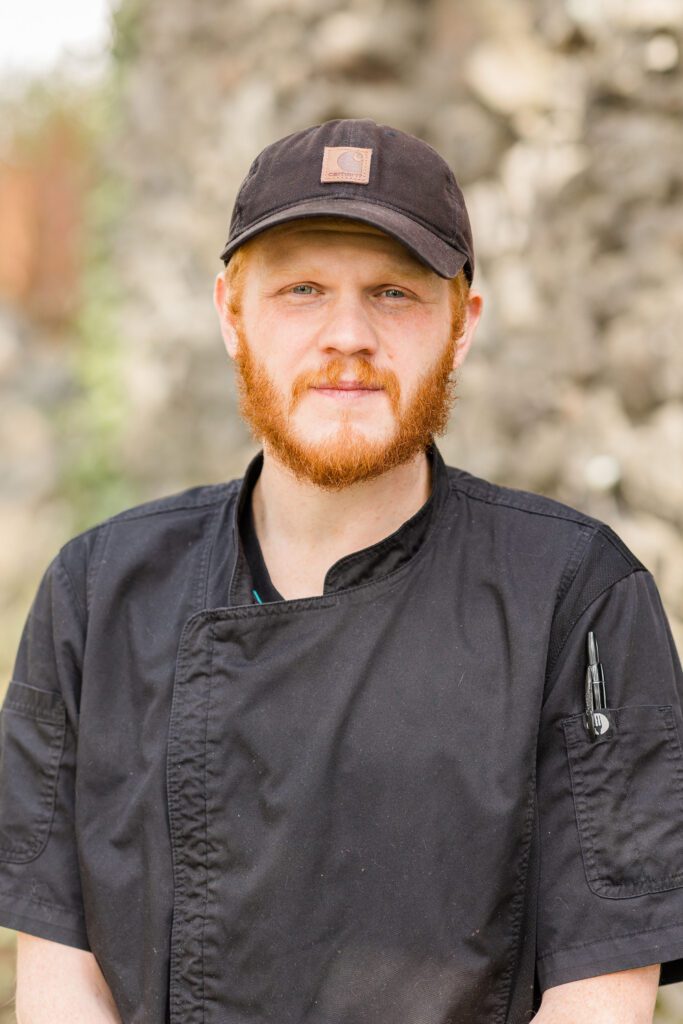via Spokane Journal By Adam Hegsted Imagine getting to a restaurant without knowing the time of year, the location, or really anything about that restaurant. Just show up, be present and observe as food and drink are served. Now imagine you can tell by the items that you are served what time of year it is and approximately where the restaurant is located. Let’s say, it’s smoked fresh Idaho trout with sauteed morel mushrooms, fresh peas, local potatoes, radishes, and sweet onions. Perhaps the drink is a local beer, cider, or wine, like a cider made from Washington apples or with Idaho huckleberries. With an incredibly discernable palate, you could tell where the wine, beer, or cider was from, and from the food description, you might know you’re somewhere in the Northwest. If you’re knowledgeable about the seasonality of foods, you might know these items are from late spring. Now that we can virtually have any food, any time of year depending on how much you’re willing to pay, it is hard for some people to recognize the seasonality of foods. Most people have longtime associations with stewed or braised items, root vegetables, and apples when it comes to winter. Or tomatoes, melons, basil, and corn in the summer. But it is not common knowledge to approximate weeks of the season to know when these products are available locally. That is something that takes a conscious effort to track. Those with past farming and gardening experience, or someone who visits farmers markets or co-ops, may have a better sense of seasonality. Understanding seasonality and the food cycle is one thing that chefs or restaurants can do to stand out from the crowd. When you visit a restaurant during a certain time of year, and the chef buys locally, the menu will reflect the time and place of that restaurant. While it’s nearly impossible to shop only locally and have things come only from our distinct region, the menu can still reflect ingredients that are available. Maybe you’re an Italian restaurant that uses olive oil, or you need tomatoes year-round. There is a way to incorporate local items into that cuisine to keep it true to your idea and vision. You could use local lettuces, veggies that are in season, wild mushrooms, and fish. This is not a new idea. In most traditional ethnic dishes, those dishes are either presented with what is locally available or what has been preserved. That is where the history of that cuisine comes into play and how it became a traditional dish. We have that here in the U.S. as well with southern cuisine, native cuisines, Tex-Mex, and others. Although our cuisines are muddled from different ethnicities, they are built from an abundance of what can be grown locally and ideas that were fostered over time. As time has gone on, this abundance has grown in variety. You can get bananas anywhere, anytime of year. You can get oranges, or apples, or avocados anytime, almost anywhere in the U.S. The abundance of food has grown, and some of the regionality has been lost because of this. I understand that restaurants need to listen to their guests, and sometimes, the guests request items that are not available locally or are not in season. This is a business of serving, and the industry has been built around being in service to our guests. While all restaurants over time develop those special items that run out of the normal seasonality of the item, there is no reason that much of your menu couldn’t change seasonally. The idea must be introduced to your guests though, and they must get used to those changes. This builds loyalty and excitement from the guests. When winter rolls around, it’s time for braised dishes and apple tarts. Guests will get excited because those favorite items were gone for a few months. When it’s time for strawberries or tomatoes, guests will expect to see those. When you stick to this seasonal rotation, it also says something about what you serve. It says that I am serving the best products of that season and am serving you best by not serving you those items out of season because they just are not as good. Serving seasonal foods helps restaurants stand out from the others. One of the things that people like about Red Robin or Applebee’s is that no matter the time of year, the location of the restaurant, the food will be the same. It is probably not the best meal you will be hoping for, but it won’t be the worst either. It will be exactly what you expect. When you go to Denny’s, you are not expecting the best service, the best coffee, or even the best pancakes. You have a set expectation of what you will get and 99% of your expectation is what is served. Now when you visit a new town and are looking for a reflection of that community and a regional experience, you don’t go to a chain restaurant. You are looking for a place that serves a little higher quality of foods and that has something that stands out. Maybe it’s the special huckleberry jam they offer with their toast or their mom’s fried chicken recipe. You are looking for something that unlocks the secret code to that area. The secret restaurant with the seasonal food becomes novel. That is how we build regional identity and a better food system. It takes chefs and restaurants taking that risk and changing their menus to reflect what is available locally and in season. It doesn’t have to be huge changes, just things that are more subtle. Maybe it’s your chef’s salad that has items change with the season. Maybe it’s the side items you offer to your guests. It’s a combination of everyone’s efforts to showcase and show off what our region is all about. We live in a huge hotbed of great foods, and it’s time

